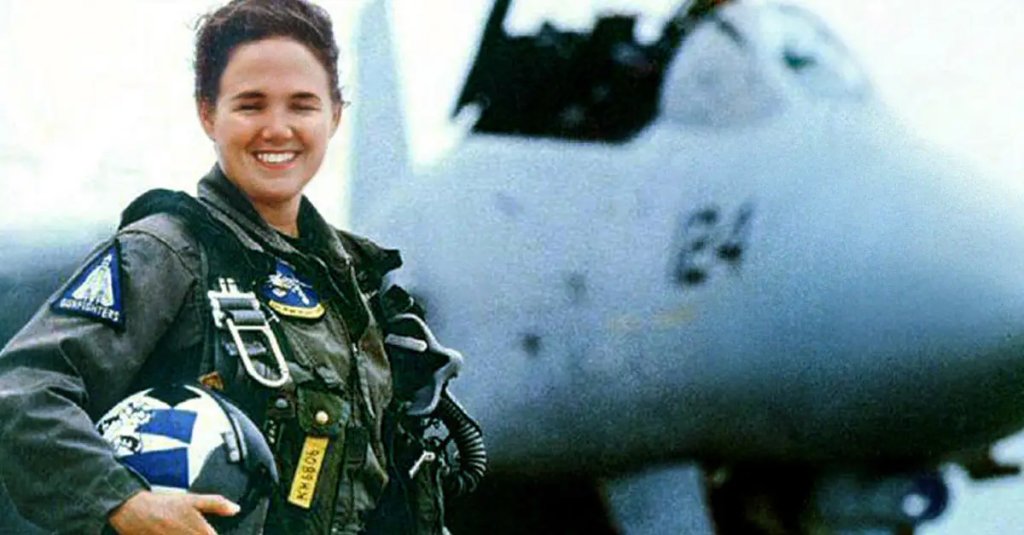When Lt. Kara Hultgreen died while trying to land on the USS Abraham Lincoln, the event touched off a national debate about women in combat roles and the military pushing women who weren’t ready into active service. Except Hultgreen was more than qualified to be the first female naval aviator – she was just a victim of a well-known deficiency in the F-14‘s Pratt & Whitney engine.

“Top Gun” doesn’t mention engine deficiencies.
Hultgreen’s mom thought she would be the perfect debutante. Instead, her little Kara set out to be a Naval Aviator, flying the F-14 Tomcat. The goal didn’t stop at the F-14; Kara Hultgreen wanted to be an astronaut one day. But she didn’t start with the Tomcat, she started her career flying the less-pretty EA-6A. She made it to the Tomcat 18 months later.
“Yes, it’s a macho job in a number of ways,” she told Woman Pilot magazine before she died. “But that’s not why I wanted to do it. I did this to become a fighter pilot. It makes me feel no less feminine and it should not make men feel less masculine. The F-14 is a humbling jet and I’ve been humbled.”

What she meant by being humbled is that Hultgreen narrowly failed her first attempt at F-14 carrier qualification. But she passed easily her second time around, ranking third in her class overall. Tragically, it was a similar event that would result in her death.
On Oct. 25, 1994, she was attempting to land her F-14 aboard the USS Abraham Lincoln. She overshot the landing area’s centerline and attempted to correct the mistake. Her correction disrupted the airflow into her Tomcat’s left engine, which caused it to fail. This was a known deficiency in that particular engine. What she did next caused the plane to tilt over to the left. When her Radar Intercept Officer realized the plane was not recoverable, he initiated the plane’s ejection sequences. He was fired out, and .4 seconds later, Hultgreen was fired out of the plane.
But by then, the Tomcat had turned over by 90 degrees and Hultgreen was launched into the ocean, killing her instantly.
By the time she died, Lt. Hultgreen had more than 1,240 hours of flying time in the F-14 Tomcat and had landed on a carrier some 58 times, 17 times at night. She was ranked first in defending the fleet from simulated attacks by enemy aircraft and in air refueling, and second in tactics to evade enemy aircraft and in combined familiarization with tactics and aircraft. The Aerospace Engineer was a Distinguished Naval Graduate of Aviation Officer Candidate School in Pensacola.

Yet, despite all of her achievements, training and preparation, there were some who blamed the military for her death, alleging her superiors overlooked her mistakes in training in trying to beat the Air Force in training the first female fighter pilot. One group, the Center for Military Readiness, claimed to have obtained Hultgreen’s training records in 1995, records which they said would have disqualified her as an aviator.
These records are contradicted by records released from Hultgreen’s family the year prior, however. Her colleagues and fellow pilots praised her performance as a naval aviator and reminded people that 10 F-14 pilots were killed in accidents between the years of 1992 and 1994. Hultgreen once even brought an EA-6A Intruder to a safe landing, despite flying it with crippled landing gear.


